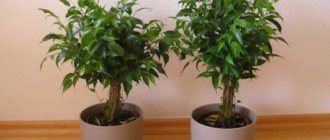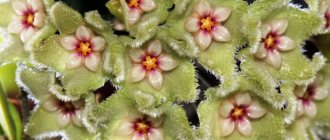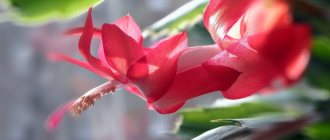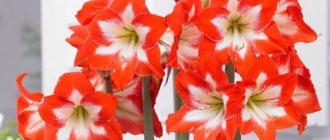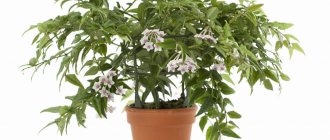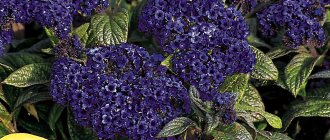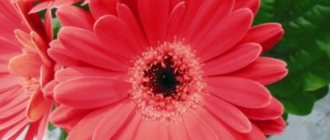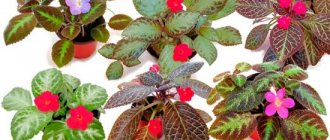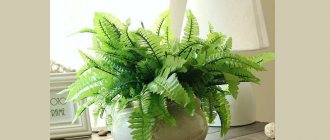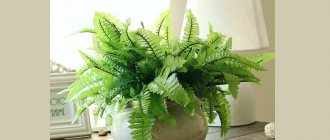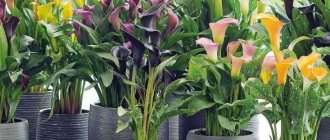Plants » Flowers
0
277
Article rating
Kira Stoletova
Some people believe that hoya, or wax ivy, brings bad luck to the home. Such a hypothesis is erroneous and has no compelling basis. On the contrary, a beautiful liana-like plant with delicate small buds, as if sculpted from wax, can bring considerable benefits to its owner.
Hoya signs
Beliefs associated with keeping Hoya at home
Popular rumor likes to attribute sinister properties to climbing plants. And hoya was no exception - they say that this plant cannot be kept in the house because it:
- is an energy vampire;
- drives men out of the house;
- leads to deterioration of health;
- provokes troubles at work;
- releases harmful substances into the air (but scientific research disproves this).
However, there are also positive superstitions about wax ivy. For example, Feng Shui adherents say:
- if you put a hoya in the bedroom, it will strengthen the marriage;
- if you place a climbing plant near doors or windows, this will protect the house from the penetration of negative energy from the outside;
- This beautifully flowering evergreen plant harmonizes the atmosphere of the house, making it more favorable for people.
In addition, there is an opinion that hoya helps to cope with gossips and envious people.
General characteristics
A climbing ornamental plant is often used by designers when decorating both office and home interiors.
Unfortunately, recently, the position of waxweed in the popularity rankings has decreased - due to the fact that the hoya plant has different signs and superstitions, including negative ones.
There is an opinion that in a room where a person spends a long period of time, the presence of a climbing plant can lead to various kinds of problems:
- deterioration of health
- troubles on the personal front
- disagreements with superiors and so on
Wax ivy belongs to the palmetto family. Depending on the variety, it can be either a shrub or a vine. It has a strong stem with opposite leaves.
The leaves can be oval or pointed in shape, and also have different colors. In home floriculture, there are often varieties with foliage colors of all variations of a green shade or varieties whose leaves are colored the same green, but interspersed with different pastel shades.
Hoya inflorescences have the shape of umbrellas and are endowed with a pronounced and quite pleasant aroma. The color of the inflorescences, depending on the variety and type, may vary.
Photo
In the following photo you can see what the flower looks like:
Where is the best place to put it?
There are several options for arranging a plant in which it will bring good luck to the residents of the house:
- You can put the plant in the bedroom. This will make the relationship between lovers more harmonious and warm. Astrologers recommend choosing a type called Heart of Kerry. This variety even has heart-shaped leaves.
- If you place a flowerpot with a flower in the children's room, it will help your children grow up more independent.
- Also, many gardeners place the plant in the living room or dining room. Hoya helps get rid of fatigue and restore strength after a hard day at work.
Reference! You can even place Hoya in your office. If you constantly look after her and do it competently, she will reward her owner with success in her work. The most important thing is to provide the culture with maximum care.
Whether to place a hoya in your home or not, everyone decides for themselves. Undoubtedly, this plant has more positive properties than negative ones. The flower makes the air cleaner and saturates it with oxygen, and also fights skin diseases and simply decorates the interior.
What problems can a flower bring?
If you rely not on superstition, but on scientific data and common sense, hoya is absolutely harmless. This plant does not emit any harmful substances; on the contrary, like all indoor flowers, it absorbs carbon dioxide and releases oxygen, purifying the air in the house.
The only danger associated with this plant may be the intense smell of its flowers. So people with a tendency to diseases of the respiratory system and allergies may experience individual reactions when hoya blooms.
Signs by plant type
Fleshy (Carnosa)
This type of hoya is also feared by gardeners. It is believed that the plant scares away all residents of the house except the owner. The only option to get a fleshy hoya is to bring it into the house as a young seedling. In this case, the plant will protect all the inhabitants who were in the house before its appearance.
Bella
There are the same legends about this variety as about other types of wax ivy. However, this plant is considered even more powerful. Culture is capable of expelling not only a spouse from home, but also adult sons.
But on the other hand, Bella protects flower growers from envy and anger. Moreover, the flower saves not only the owner himself, but also his guests from negativity.
How to care for a flower so that it does not cause harm and takes root?
Wax ivy is very undemanding in terms of conditions and can tolerate many of the mistakes of a novice gardener, but it is still better to adhere to some rules of care:
- For regular flowering and decorative foliage, the plant requires a sufficient level of lighting. It would be ideal to place a pot of hoya on an east or west window.
- When planting, it is necessary to ensure good drainage and light, breathable soil.
- Excessive watering will cause much more harm to your hoya than drying out the soil. Roots easily rot from excess moisture. Water moderately, allowing the soil in the upper half of the pot to dry.
- Wintering at a temperature of about 17 degrees Celsius is desirable.
- You can feed Hoya with fertilizers in spring and summer. Use either fertilizers for flowering plants, but diluted twice as much as directed, or special fertilizers for succulents.
- Hoya does not need spraying - it tolerates dry air well.
Based on the above, we can conclude that hoya is not only completely harmless to the health of people and their pets, but also an extremely unpretentious plant. Myths about its danger are in no way confirmed by science and, having spent very little effort on proper care for it, you can decorate your home with this unusual and highly decorative plant.
Care instructions
Home care for her is as follows:
- selection of high-quality and suitable soil for planting
- correct landing
- maintaining temperature conditions and, if necessary, providing sufficient light
- timely fertilizing and watering
- creating conditions for wintering
- correctly performed actions to form a vine
Under natural conditions, hoya grows near large trees, resting on branches and trunks, i.e. in partial shade conditions. At home, a convenient location for hoya will be the place between the western and eastern windows. In winter, the pot is moved to a window facing south. The plant will spend the winter comfortably there.
If there are no such possibilities, owners should take care of an additional light source. It is worth remembering that if in the spring the flower does not receive sufficient lighting, in the summer there can be no talk of any flowering.
If desired and appropriate, in summer the ivy can be placed outdoors, but in such a way that it is not exposed to direct sunlight. Otherwise, the foliage will quickly lose its color and, accordingly, its decorative appeal. In winter, the temperature in the room with the flower should not exceed 16-17 degrees.
Maintaining the required humidity is not limited to just watering. Several times a year, it is recommended to bathe the flower with complete immersion in a bath of water at room temperature. The leafy part is immersed in water for 40 minutes, and the roots for an hour and a half. Without swimming, this kind of summer will not be observed.
Signs and beliefs
Based on changes in the appearance and condition of the flower, superstitious people try to protect themselves from possible problems and misfortunes:
Hoya photo indoor signs
- Hoya is not a crop with a continuous flowering stage, so the formation of inflorescences at the wrong time is considered a sign of the untimely sudden death of someone close.
- Yellowed leaves are a signal of an unfavorable state of affairs. Negative energy is likely to prevail in the house, and family members would do well to get checked at a medical facility to eliminate the risk of any disease.
- If a flower suddenly begins to dry out for no apparent reason, an enemy has most likely appeared. Despite the fact that in this situation the exotic diverted the danger from the owner, the latter needs to identify the ill-wisher in order to completely eliminate the threat.
Types and varieties
In a short period, breeders have developed many new varieties of Hoya, while previously only Hoya bella and Hoya carnosa were distinguished.
First of all, I would like to talk about the most common hoya, which is found quite often. So, the Hoya fleshy flower is an evergreen plant that necessarily requires support for normal growth, since its lashes reach a length of six meters. Beautiful white flowers with a pink center are collected in a rosette. They exude an incredible aroma that you want to inhale constantly. The leaves are not too large, matte, but very hard and fleshy.
Hoya is wonderful. This is a shrub with rather long branches, which are covered with small leaves densely located along the shoots. Hoya beautiful has incredibly beautiful flowers, it seems that each of them was made to order. The small white stars have a beautiful purple crown in the center.
Hoya multiflora. A very beautiful plant that has small yellowish flowers collected in beautiful inflorescences. They have very narrow petals and an unusual crown in the middle.
Hoya lacunosa. This is a climbing plant whose shoots grow in a dense cascade. Each of them is covered with dark green, diamond-shaped leaves. The flowers, collected in elegant umbrellas, have the appearance of fleecy corollas and an unusual yellow center.
Hoya variegated. This is a vine that grows quite slowly. Its shoots are strewn with colorful leaves. And during flowering, it pleases not only with the beauty of the flowers, but also with a wonderful aroma.
Hoya linear. On the shoots of this plant you can find many narrow linear leaves, which can even be confused with needles. She also has unusual flowers that have an amazing gray-green hue and an incredible aroma. Young whips are distinguished by the fact that they are almost completely white. The flowers are collected in umbrellas of about twenty pieces.
These are not all types of hoya, but those presented are the most common.
Transfer
Every spring it is necessary to replant young plants. As for older individuals, they can be transplanted once every three years, but only if this is absolutely necessary. Hoya does not need a large pot, but it must be new. You cannot use dishes in which some other plant has already grown. And remember that even a newly purchased pot should be washed well using soap, and the substrate in which you plan to place the plants must be sterilized.
It is better to choose neutral soil for growing hoya, although slightly acidic soil can also be used. But it is advisable to prepare the substrate yourself. To do this you need to mix:
- one part of leaf soil;
- one part of humus;
- two parts of clay-turf soil.
Some gardeners, in order not to waste time and money on preparing the substrate, simply purchase soil for orchids in the store, and some even use ordinary garden soil. A lot depends on what variety you choose. When replanting, do not forget to cover the bottom of the pot with a drainage layer. The hoya is transplanted into a new pot along with the old earthen ball.
Is it possible to keep Hoya at home?
A superstition has become firmly established in our country, which says that wax ivy brings bad luck to its owner, so keeping such a decorative plant at home is not recommended. Domestic flower growers attribute other mythical properties to hoya:
- vine-like, fast-growing ivy produces very fragrant, single star-shaped flowers, collected in spherical baskets, and during the period when the plant blooms, great misfortunes await the owners of the decorative crop;
- an indoor flower drives men out of homes, makes women unhappy and destroys family happiness;
- a house in which wax ivy is grown very often faces financial problems.
Supporters of this decorative culture claim that indoor hoya is capable of pacifying envious people and gossips, and is also a plant of family happiness, so the only contraindication for growing wax ivy may be an allergy to pollen. Whether to believe signs and superstitions is a personal matter for each gardener, but it is important to remember that all indoor flowers, including hoya, are able to create coziness and also effectively absorb harmful substances or carbon dioxide.
Fertilizers and fertilizers
Hoya's care features are not too different from other plants, but there are still some nuances. For example, you must definitely remember about fertilizers, because this is a very important point in growing plants.
If we talk about living nature, then different types of hoya have their homeland, where they have special soil and growing conditions, so at home you have to adapt to the preferences of the plant. Each variety needs different fertilizers. The general rule for everyone is that every hoya requires fertilizer for succulent plants. Because, based on the observations of gardeners, almost every species reacts equally positively to this group of fertilizers. And those gardeners who are not lazy and periodically replant the plant into a new pot with updated soil will not feed the plant at all.
How does Hoya or indoor wax ivy bloom?
Receiving wax ivy as a gift is a great success, since the flower is unusual and beautiful, and very easy to care for. It will delight you all winter with the rich green color of its leaves and all summer with umbrellas of fragrant flowers. Hoya, or wax ivy, is an ideal indoor friend for both novice gardeners and connoisseurs. To grow it, you don’t need much effort or skill.
The place of origin of the plant is the warm regions of India, China, and the Pacific Islands. It belongs to a subspecies of lianas, and received the name “wax ivy” because of its dark and shiny leaves, as if covered with wax, and the ability to wrap around supports.
Blooming beauty
There are about 200 species of hoya in nature, the most common of which are:
- Pale. The flower acquired its name because of its soft light green color and light yellow star-shaped flowers. It is distinguished by an unusual mint or citrus aroma of inflorescences;
- Pimpled. It received this name because of the depressed veins along the dark green leaves. Blooms with greenish-yellow inflorescences;
- Royal. Due to the flowers, the size of which is much larger than that of other species, it is considered the princess wax ivy.
Royal hoya
- Longifolia. The leaves of this species reach 18 cm in length (when a leaf is usually about 6 cm) and 1 cm in width. The flowers are white and small;
- Large-leaved. A well-deserved name for the species, since the leaves of this beauty are really large - up to 20 cm long, 10 cm wide. The leaves are decorated with white veins;
- Emglore. Unusual look, not at all like the others. The leaves are small and curved, the flowers are rare, up to 4-5 pieces in an inflorescence;
- Multi-flowered. The yellow flowers of this climbing vine reach 50 pieces in an inflorescence;
- Beautiful. The leaves are small, the vines reach 6 meters in length. This species is distinguished by a beautiful inflorescence - light petals, pubescent on the inside, and a bright crimson crown inside.
Hoya is beautiful
- Meaty. The most common hoya. The leaves are dark green, medium length, inflorescences of 40-50 flowers, white or pink-cream in color. The smell is pronounced, sweet. The shoots reach 3 meters and grow very quickly.
wax bloom
Reproduction most often occurs by cuttings directly into the soil or water with further planting. But not everyone knows that the home wax hoya flower can bloom. It is easy to care for a flower, but for it to bloom, certain conditions are needed:
- Abundant sunlight, preferably western or eastern exposure. At the same time, if direct sunlight hits the flower, its leaves will begin to turn yellow and fall off.
- Watering should only be done when the earthen ball is completely dry. In winter, watering should be even less frequent;
- Temperature in summer is 18-27C°, in winter no higher than 15C°;
- Bathing the plant twice a year - in autumn and spring (after and before flowering) provokes flowering. In warm water (not higher than 40C°), completely immerse the vines along with the pot for 40 minutes. After removing the branches, leave the pot in the water for another hour;
- The indoor plant Hoya is a one-place flower; if you change it even twice a year, this can cause a lack of flowering.
Blooming on the window
- There are no special requirements for humidity, but spraying with water will only be beneficial;
- It is necessary to replant the flower with maximum preservation of the root system. The ideal option would be to transfer it to a slightly larger pot. For the first 3 years, replanting is required every year, then less frequently.
- Often a flower refuses to produce buds when growing in a large, spacious pot.
Hoya roots must be tightly intertwined in the soil in order for it to bloom throughout the summer season.
Interesting fact! You can provoke flowering by planting a flower in a small pot.
With proper and simple care, flowering lasts from the beginning of summer until autumn. Flowers are collected in bunches (umbrellas) of 20 to 50 flowers in one. The flowers have the same waxy effect as the leaves. The flower itself consists of petals and a crown in the center. Beauty lies not only in quantity, but also in the contrast of color. More often the petals are light, and the crown is crimson, red, bright orange, lilac.
Important! Flowers that have already withered do not need to be picked; new ones will bloom in their place.
Flowering is accompanied by a strong smell; depending on the type of plant, the aromas vary - from honey to delicate notes of citrus. The most domesticated ones have a pronounced smell, so it is not advisable to place them in bedrooms.
Fleshy Hoya is the most common indoor species
Can Hoya (wax ivy) be kept at home?
Opinions about the dangers and benefits of growing different indoor flowers differ among lovers and connoisseurs of home greens. Some know by heart the list of “undesirable” apartment dwellers and avoid such types of plants, others grow everything that pleases the eye and soul, regardless of fiction and horror stories. Why do such superstitions arise? If you like hoya, can you keep this wax miracle at home?
The belief that ivy is a symbol of something bad dates back to ancient times. These plants love to twine around cold stones, weave on rocks and in caves, which have always been associated with something bad. Ivy often covered crypts and tombstones. Hence the connection between plants and evil spirits and vampires that allegedly lived in such places was found.
The unnatural shine of the leaves and flowers of this plant also aroused suspicion and fear. The plant was considered poisonous, because of its shine. And the intoxicating aroma during abundant flowering only added confidence to those who liked to invent superstitions. The smell can really cause illness and an allergic reaction, so it is recommended to place the wax beauty in large rooms that are often ventilated.
Waxy shine looks artificial
The next horror story is that ivy sucks energy. The very ability to twist and weave is reminiscent of snakes, creeping things, etc., which again evokes comparison with evil spirits, something poisonous and bad. If the plant wraps around, then over time it seems to suffocate. This means it takes away all the juices and strength. Yes, many types of ivy are parasites. They twine around plants, shrubs and trees, killing them, depriving them of light and leading to their death. Some species obtain nutrition from other plants. Because of some types of such parasites, the label was hung on everything that crawls.
Girls who dream of getting married associate the plant with their failures in searching and loneliness. Tying the negative, built up over the years, to the plant, they began to classify it as one of those flowers that drive husbands out of the house. And not only spouses, but also sons.
Myth or truth
If you believe all the superstitions about the hoya flower, is it possible to keep it at home, you should remember its roots - it is not ivy. It was so called by the people due to the similarity of its growth method and ability to braid. She is a representative of the Lastovnevy subfamily, which are not at all related to ivy. It feeds exclusively with the help of its root system, not being a parasite, and gets along well with other indoor neighbors.
Important! Attributing “bad qualities” to the home flower Hoya would be a mistake.
People who experience difficulties in life and family discord often shift responsibility for their failures onto others. Sometimes an ordinary indoor flower also plays this role. The experience of such people has become the reason for the spread of myths that flowers can influence the quality of relationships in the family and the level of luck and happiness in life.
Of course, a flower affects the atmosphere in the room where it is located. By adding coziness, complete design notes and introducing their own accents, indoor friends become full-fledged family members for amateur flower growers. And it is these people who dispel the myths that some of the plants can bring misfortune.
Hoya in full bloom
Opinion: why wax ivy cannot be grown at home
Why can’t you grow a hoya flower at home? Another opinion is that it sucks energy. Moreover, this property of the plant is considered both useful and harmful. Initially, green absorbs negative energy in those places where people swear, quarrel and pour out their negativity especially often. It is recommended to place this flower in rooms where there are a large number of people connected with any problems. Maybe it’s because hoya is so popular among government agencies, offices and schools. In these places, flows of different energies and thoughts collide. The flower is precisely able to regulate them.
Later, when all the negativity has been absorbed, the wax beauty begins to feed on positive energy flows, taking away joy and strength. Some advise moving the flower from room to room, or placing it in places where people do not stay for a long time. But then you may not see flowering, since hoya does not like moving and rearranging.
If you believe in bad omens associated with this handsome man, you should not bring him into the house. With his thoughts, a person attracts negativity and troubles into his life, while blaming the plant. But sometimes people bring this plant into their home and then disbelieve in such slander, proving that the flower brings only positive emotions and is pleasing to the eye. Whether to believe the signs or not is a personal matter for everyone, but at the same time, there is no clear evidence that hoya negatively affects the lives of household members.
Is Hoya poisonous or not?
During growth and flowering, the plant does not emit toxic or harmful substances. On the contrary, it helps replace carbon dioxide with oxygen in the room. The only negative reaction can be caused by the strong odor during flowering.
Interesting fact. Numerous studies have proven that Hoya is not poisonous and does not emit hazardous substances.
The other side of superstitions about green beauties lies only in the positive qualities of this indoor resident. It gives a friendly atmosphere, absorbs negativity, and promotes the development of strong family relationships. Hoya can be kept at home; it is absolutely harmless. The plant is loved for its ease of care, the beauty of its blooms, and its ability to create complete compositions from long shoots.
Author:
Ivan Fedorovich Khromtsov
Can it be grown from a leaf?
Growing hoya from leaves is rarely successful, but if you are a patient person, then why not give it a try. A healthy leaf is simply torn from the plant and placed in light soil. Roots appear on it quite quickly, but for some reason the plant does not grow further.
But some scientists began to solve this issue and came to the conclusion that it is possible to grow hoya from a leaf only if the leaf was plucked from a wild plant.
So, there are a few tips that you can use to help you grow a beautiful plant from a leaf:
- It is better to use chemicals that will stimulate cell growth in the hoya leaves.
- To use such drugs, it is recommended to use a pipette. Only with its help will you be able to accurately drop one drop into the center of the leaf, from where the liquid will be evenly distributed further.
- For rooting, choose leaves that have at least small petioles.
- A rooted leaf can only be planted in loose soil and always at an angle of forty-five degrees. Otherwise, you may not expect a positive result.
A little history
Robert Brown, a famous scientist, author of the Brownian movement, gave the name to the flower. When describing hanging vines in 1810, he named them Tomos Hoya, who was his friend and served as a gardener. Thomas worked in the Duke of Northumberland's greenhouse for many years, breeding and growing tropical crops.
Hoya, which has more than 200 varieties, belongs to plants from the Kutrov family in the subfamily Pantyaceae. Wax ivy is often found in Asia, western Australia, and the south of the Middle Kingdom. It lives in the Canary Islands and Madagascar. In the tropics it grows in open forests, clings to trees, and spreads along rocky slopes. The length reaches 10 m.
Is the flower to blame for human troubles?
Some superstitious people believe that keeping ivy in an apartment is in itself a bad omen. Allegedly, when the hoya blooms, the residents of the house should prepare for big problems that will last throughout the entire period of its flowering.
If you believe the negative interpretation, then the person who brought this plant into the house will no longer “love” money. The flower makes women lonely and unhappy.
However, most of those who still “risk” having a hoya claim that all these beliefs and signs are nothing more than superstitions. People themselves are responsible for family relationships; many people also have financial problems that arise and disappear, regardless of whether their hoya grows or not. Therefore, before blaming ivy, a person should analyze his own actions and understand that he himself is to blame for many of his troubles.
Feng Shui use
According to the widely spread ancient teachings of Feng Shui, it is not recommended to place artificial flowers in residential premises, as well as bouquets and floral arrangements of dried flowers, which are completely devoid of positive and living energy “qi”. According to the majority of florists who share the teachings of Feng Shui, it is hoya that can improve the atmosphere of a room and make it more harmonious and comfortable for human life.
Wax ivy is recognized as a houseplant that strengthens not only intrafamily, but also family and family ties. The positive impact of indoor hoya is considered especially strong, both on the psychological and sexual life of a married couple, so Feng Shui experts recommend placing indoor flowers in bedrooms or living rooms.
The best-performing varieties are the ampelous varieties, which, due to their rapid growth, easily reach maximum sizes and allow you to effectively decorate even a very impressive surface. The plant is not only very decorative, but also undemanding in care, and easily tolerates some errors and mistakes that novice amateur gardeners often make. Even minimal care allows you to get an attractive and beautifully blooming indoor plant, which will become a worthy and very durable decoration of your indoor interior.
